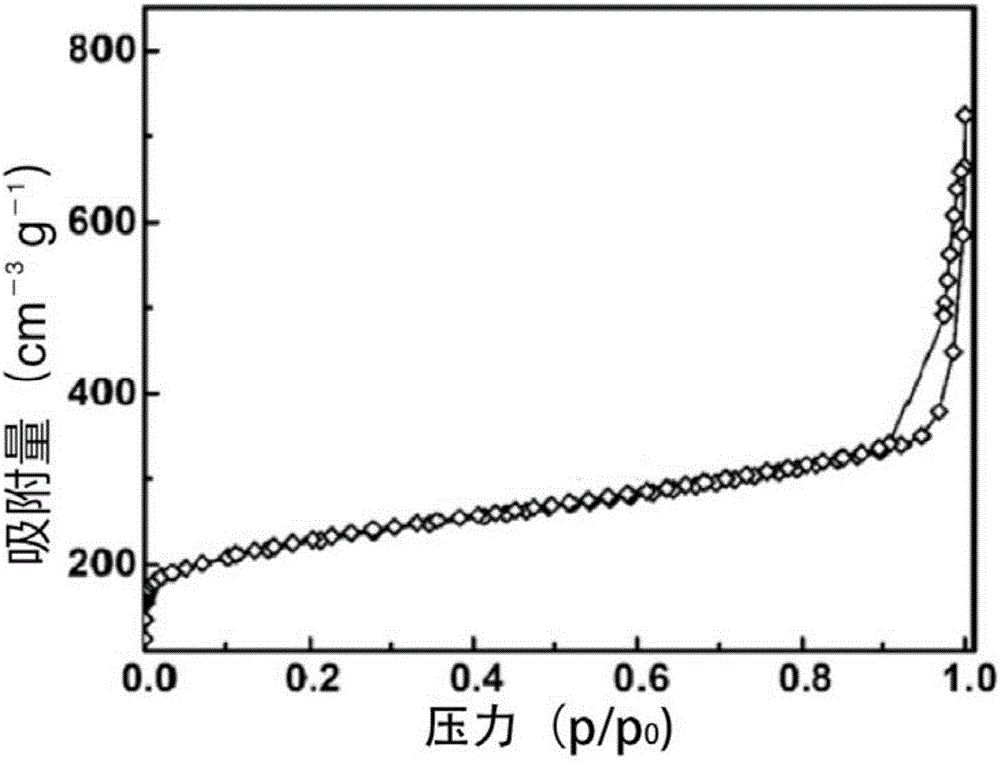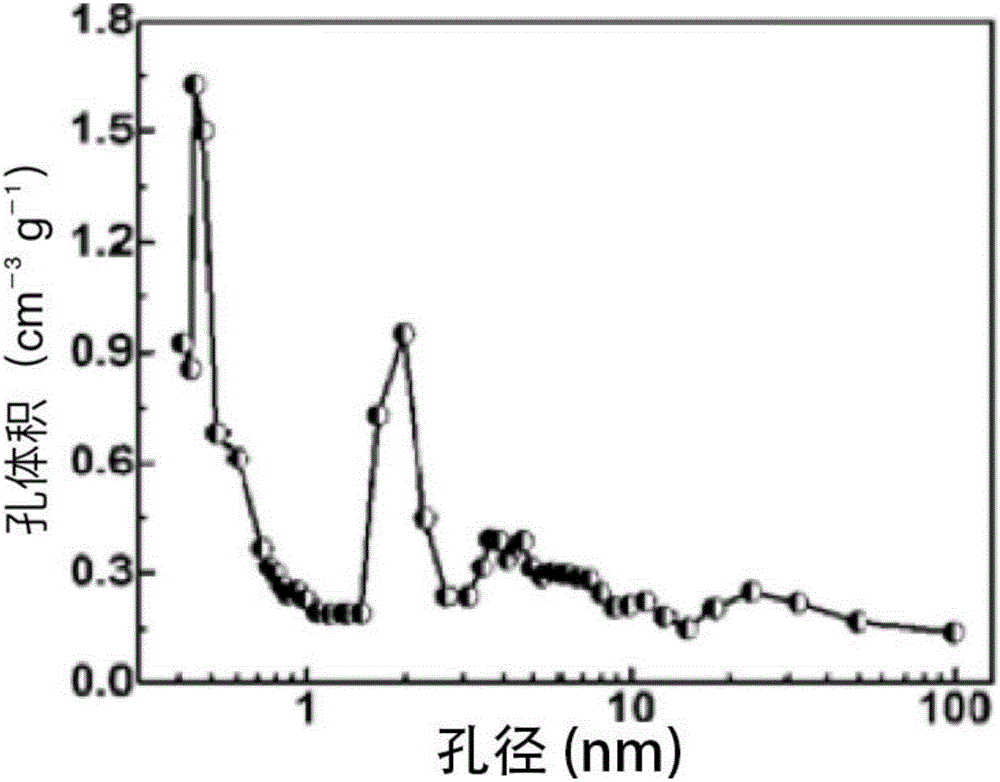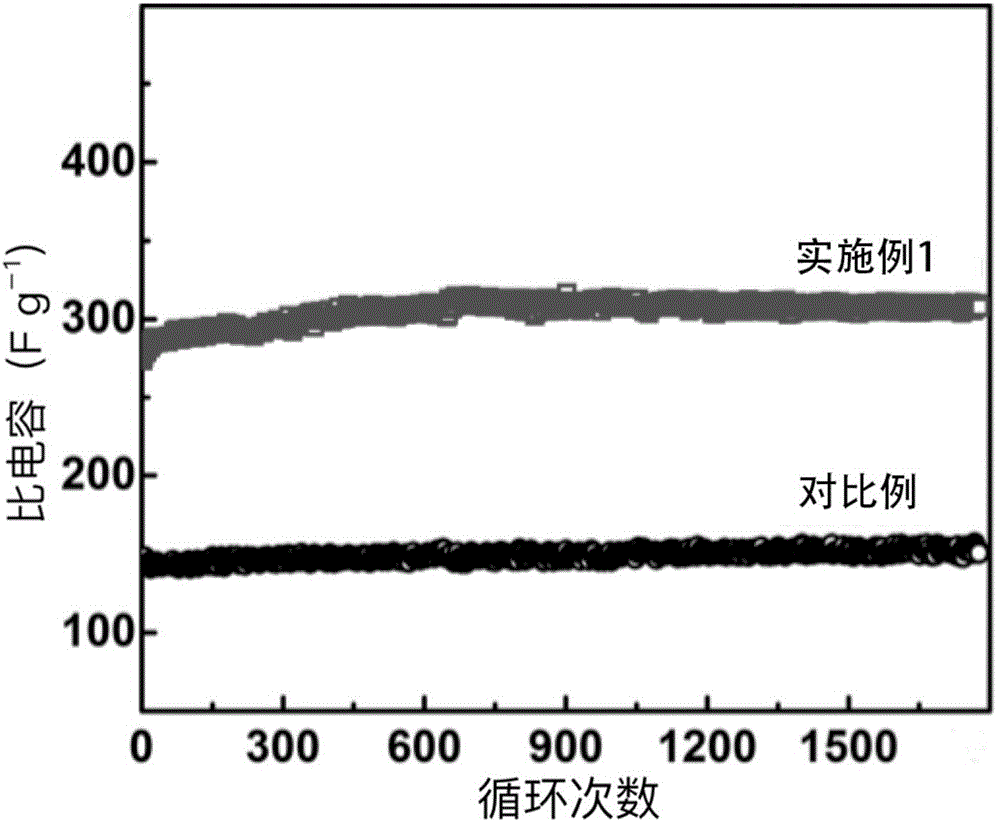Method for preparing multistage porous carbon materials
A technology of multi-level pores and carbon materials, applied in the field of materials, can solve problems such as large environmental hazards
- Summary
- Abstract
- Description
- Claims
- Application Information
AI Technical Summary
Problems solved by technology
Method used
Image
Examples
Embodiment 1
[0029] 7g SnCl 4 ·H 2 O, 33g of glucose and 6.1g of thiourea were dissolved in 500mL of distilled water and stirred sufficiently at room temperature to obtain a clear solution; the mixed solution was transferred to a traditional high temperature and high pressure hydrothermal reactor and reacted at 200°C for 6 hours to obtain a SnS / carbon composite Materials: The precipitate obtained from the hydrothermal reaction was separated, washed with water for several times, and dried, and the obtained sample was earthy brown. The obtained SnS / carbon composite was calcined in a nitrogen atmosphere at a high temperature of 800 degrees for 4 hours to obtain a sulfur-doped carbon material with a hierarchical porous structure, and the sample was black. The elemental analysis test of the product shows that the sulfur element content in the sample is 2.3% (mass percentage), and the specific surface area test shows that the sample contains macropores, mesopores and micropores.
[0030] The o...
Embodiment 2
[0032] 7g SnCl 4 ·H 2 0. 33g of glucose and 6.1g of thiourea were dissolved in 500mL of distilled water and fully stirred at room temperature to obtain a clear solution; the mixed solution was transferred to a microwave hydrothermal reactor and reacted at 200°C for 40 minutes to obtain a SnS / carbon composite material; The precipitate obtained from the microwave hydrothermal reaction was separated, washed with water for several times, and dried, and the obtained sample was earthy brown. The obtained SnS / carbon composite was calcined in a nitrogen atmosphere at a high temperature of 800 degrees for 4 hours to obtain a sulfur-doped carbon material with a hierarchical porous structure, and the sample was black. The elemental analysis test of the product shows that the sulfur element content in the sample is 2.1% (mass percentage), and the specific surface area test shows that the sample contains macropores, mesopores and micropores.
[0033] The obtained sulfur-doped carbon mate...
Embodiment 3
[0035] 9.2g SnCl 2 2H 2 O, 33g of glucose and 6.1g of thiourea were dissolved in 500mL of distilled water and stirred sufficiently at room temperature to obtain a clear solution; the mixed solution was transferred to a traditional high temperature and high pressure hydrothermal reactor and reacted at 180°C for 10 hours to obtain a SnS / carbon composite Materials: The precipitate obtained from the hydrothermal reaction was separated, washed with water for several times, and dried, and the obtained sample was earthy brown. The obtained SnS / carbon composite was calcined in a nitrogen atmosphere at a high temperature of 800 degrees for 6 hours to obtain a sulfur-doped carbon material with a hierarchical porous structure, and the sample was black. The elemental analysis test of the product shows that the sulfur element content in the sample is 1.9% (mass percentage), and the specific surface area test shows that the sample contains macropores, mesopores and micropores.
[0036] Th...
PUM
 Login to View More
Login to View More Abstract
Description
Claims
Application Information
 Login to View More
Login to View More - R&D
- Intellectual Property
- Life Sciences
- Materials
- Tech Scout
- Unparalleled Data Quality
- Higher Quality Content
- 60% Fewer Hallucinations
Browse by: Latest US Patents, China's latest patents, Technical Efficacy Thesaurus, Application Domain, Technology Topic, Popular Technical Reports.
© 2025 PatSnap. All rights reserved.Legal|Privacy policy|Modern Slavery Act Transparency Statement|Sitemap|About US| Contact US: help@patsnap.com



